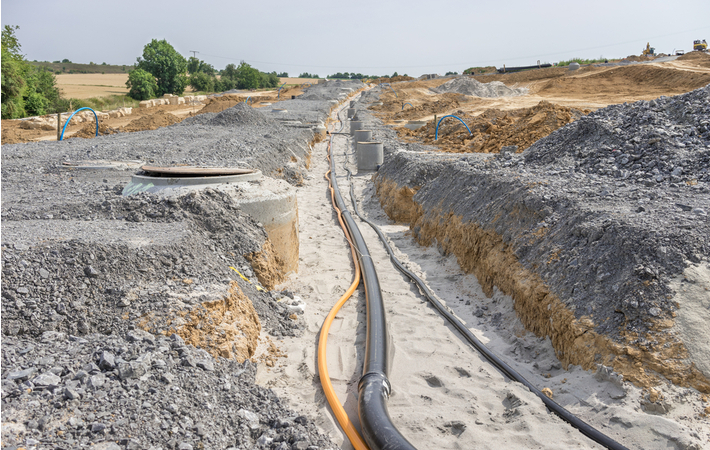Fiber optics. The technology has been around for decades, but when it comes to the internet, it seems to be the latest telecommunication buzzword.
And for good reason. With both internet dependency and device per household numbers increasing, fast, reliable internet is becoming more vital than ever before. In fact, the latest Canadian Internet Use Survey indicates that Albertans have the highest proportion of internet users at 94% and this same percentage currently has a home-based internet service plan.
With these numbers, It’s safe to say the internet isn’t going anywhere anytime soon. In fact, the demand for faster, more reliable internet will likely increase over time.
Let’s explore fiber optic internet in more detail: what it is, its advantages and disadvantages and if/why the future of telecommunications may lie in fiber optics.
What Is Fiber Optics?
Simply put, fiber optics is a way of sending information. Just like dial telephones of the past used wire cables and modern cellphones use radio waves, fiber optics provide another way to transmit information from one place to another.
Fiber optic cables are made up of tiny glass optical fibers, bound together and encased in a protective glass or plastic sleeve. Coded pulses of light are then sent through them to transmit information signals.
Although they have been used for decades in medicine and research, automotive, and military applications, fiber optics are becoming increasingly popular in global network communication and currently provide the fastest internet speeds available today.
So How Does Fiber Optics Work?
Photons, or particles of light, travel through fiber optic cables. Because these optical fibers are made of glass, the light and glass work in conjunction to keep the light contained within the fiber. This containment allows the light to travel interruption-free, at lightning speeds.
There are two ways light is contained within the fiber cable:
- Total Internal Reflection. In a phenomenon called total internal reflection, light hits the glass fibers at a shallow angle and is reflected back, as if hitting a mirror.
- Core and Cladding. The fiber cable is made up of two parts: the core and the cladding. The core is the main, innermost section in which the light travels. Protecting the core is the cladding – a lower refractive index layer of glass, which keeps the light signals within the core.
Fiber Optic Internet: The Advantages
Speed
To date, the average copper or coaxial cable speed in Canada is approximately 20-100 megabits per second (Mbps). And this speed is variable, based on:
- Time of day
- Amount of area traffic
- Downloading or uploading
Comparatively, fiber optic internet is 1,000 megabits per second, approximately 10 times faster copper cable, regardless of the time of day, amount of traffic or whether uploading or downloading.
Bandwidth
Bandwidth is the volume of information that can be sent over a connection in a measured amount of time. Fiber optic internet lines transfer data using modulated light instead of electricity, which gives them much higher bandwidth capacity. This means that no matter the time of day and amount of users, there is more than enough data for everyone to browse, stream and game. And all at extremely high speeds.

Reliability
Because fiber cable is made of glass and doesn’t carry an electric current, it is invulnerable to power outages, weather disruptions, and fire hazards. Despite its small size, it is harder and far more resistant than copper cable. Fiber optic cable can even be submerged in water, removing installation obstacles, especially in rural areas.
Security
The electrical element of copper cable makes data relatively easy to intercept. Because fiber optic cable transmits information via pulses of light, this light is contained within the fibers and doesn’t radiate a signal like copper cable.
Though fiber optic cable is incredibly difficult to tap, it is possible. However, tapping into fiber causes light to leak, which shuts down the entire system and prevents data from falling into the wrong hands.
Scalability
As technology and web-reliance continue to evolve, our devices will require faster upload and download speeds, and higher bandwidth. Investing in fiber optic internet now equips your home or business with the changes that are going to take place within the next few years.
What Are The Downsides To Fiber Internet?
Although the advantages to fiber internet far outweigh the cons, there are still some considerations to think about.
Cost
One of the biggest disadvantages of fiber internet is cost. The upfront investment costs of Installation can be costly, and disruptive.
Similarly, if your area does have accessibility to fiber cable, current monthly plans and packages may be more expensive than internet DSL or cable packages.
Infrastructure & Accessibility
One of the major hurdles to fiber optic connectivity at the moment is infrastructure – there isn’t enough fiber cable installed across Canada to provide accessible service. This means currently, fiber internet is available to only a sliver of the Canadian population, mostly those who reside in urban areas.
The Future of Fiber Internet
Building Infrastructure
As stated above, one of the major hurdles to fiber optic connectivity right now is infrastructure – there simply isn’t enough of it. However, that is rapidly changing.
The Government of Canada recognizes there is a major connectivity gap across Canada, mostly within rural vs. urban centres and is committed to providing all Canadians access to reliable, high-speed internet.

The Connect to Innovate program, launched in December 2016 will invest $500 million by 2021, to bring high-speed Internet to 300 rural and remote communities in Canada. This includes laying more than 20,000 kilometres of high-capacity fiber optic network across Canada.
Similarly, the Accelerated Investment Incentive introduced in the Government of Canada’s 2018 Fall Economic Statement offers incentives to businesses and telecommunications to invest in fiber connectivity.
Most recently, High-Speed Access for All: Canada’s Connectivity Strategy, provides $1.7 billion in new funding to build new high-speed networks across Canada, including fiber optic infrastructure.
Community Input
Canadians who do not have access to reliable internet, especially in rural areas, are starting to speak up. By engaging their city council and decision-makers, communities are proactively banding together across Canada and making their concerns known. They know that the future is fast, reliable internet and are committed to making fiber a reality.
Let’s Tether Together: Bringing Fiber Internet To Rural Alberta
Tether is committed to empowering Alberta-based businesses and homes by investing in fiber infrastructure and providing fast, reliable internet to rural communities across Alberta.
Why do we do it? For one important reason; it’s time. At Tether, we believe fiber internet isn’t the future, it’s the present. If you’re interested in bringing fiber optics to your rural home or business, get connected and contact us today.




